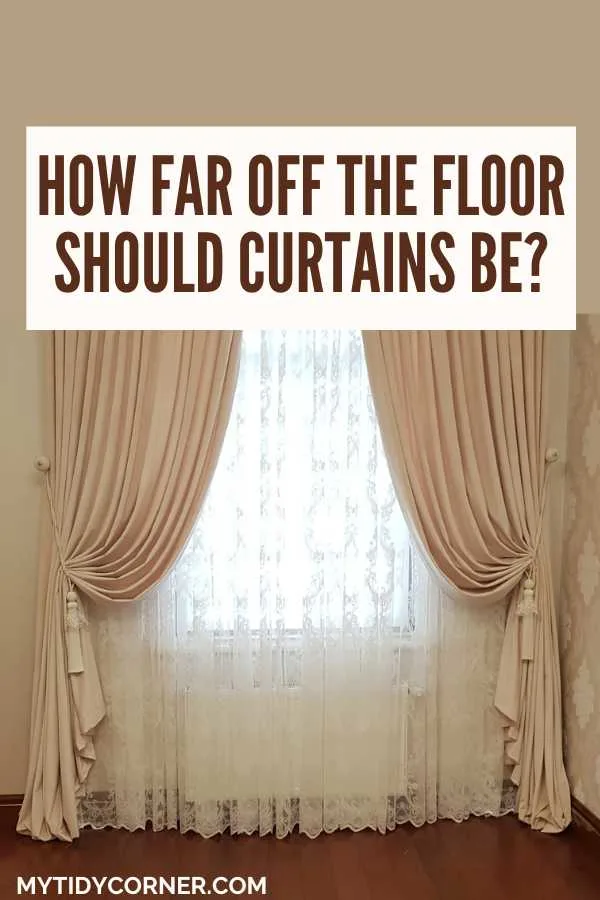How Far From the Floor Should Curtains Hang? Choosing the Ideal Curtain Length
I have had some of my readers ask, “how far off the floor should curtains be?” Today, we are tackling this question. Find out the ideal gap between your curtains and the floor.
I love picking out curtains: choosing fabrics, decorative rods, finials, and tiebacks. What I don’t love is installing the hardware and hanging the curtains.
Unless you’re going to pay someone or have a partner who is an ardent DIYer, you will end up doing it yourself. And the first step in curtain hanging is working out how far from the floor curtains should hang.
Curtains can be hung to reach the floor in five different ways. Curtains reaching the window sill are informal. Drapes may float a half-inch above or graze the floor. Add a half to three inches for a breaking effect and six to sixteen inches for curtains to puddle on the floor.
There’s nothing more depressing than getting the curtains up only to find they’re too short. Curtain hems hovering above the floor, unless they’re cafe curtains, are the bane of interior designers’ lives, as they ruin the look of the room.
Hanging your curtains at the right height enhances any window treatment and elevates a room’s style. Let’s find out how.
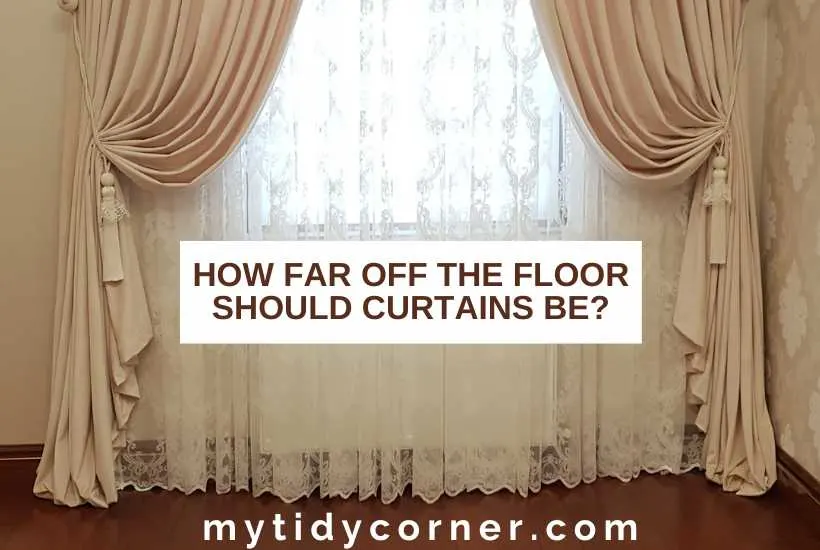
Related Articles:
How Far Off the Ground Should Curtains Be?
How high off the floor you want your curtains is both an aesthetic and practical choice.
The length of the curtains depends on the effect you want to achieve (e.g., formal or informal), the architecture of each room (e.g., window size, height of drapery pole), time and effort for maintenance, and the purpose of the curtains.
That said, apart from the horror of the hovering hem, there are few hard-and-fast rules about how far off the floor you should hang curtains.
Sill Length
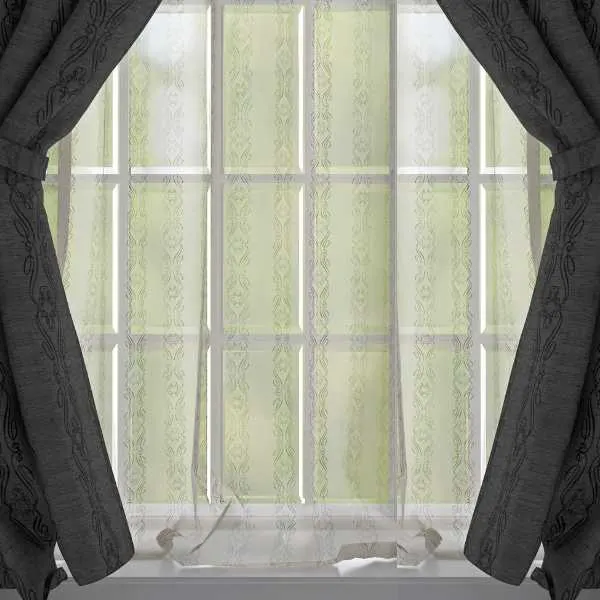
Curtains that reach only the window sill and not the floor are appropriate for kitchens, laundry rooms, and bathrooms. The look is very informal and relaxed.
You may have to hang curtains at sill length if there is a wide sill or something under the window that shouldn’t be covered by curtains.
Floating
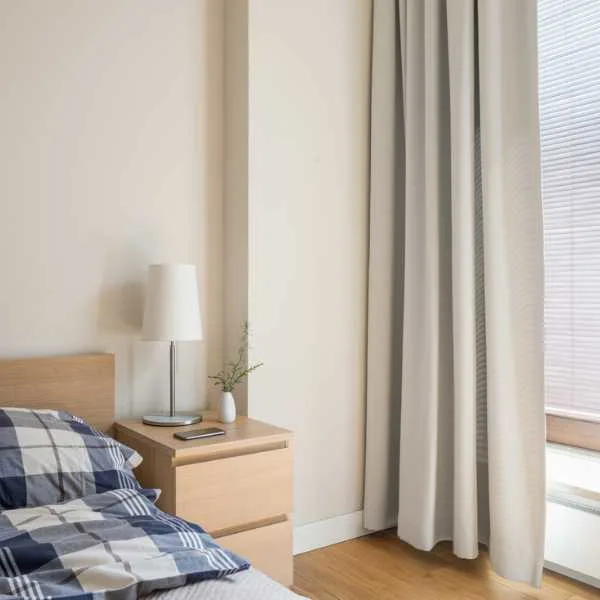
Floating drapes hang about 3/8 to ½ inch (1 cm) above the floor without touching it. This is the ideal length for regular curtains and looks neat without that outgrown trousers effect.
It’s also a sensible length, especially for curtains you frequently open and close (like bedroom curtains) as they won’t sweep the floor and get dirty. Choose this length if you have a radiator under the window, as they won’t trap heat behind the drapes.
Trying to hang curtains this height is where you run into highwater pants territory. Rather hang curtains longer than shorter: hovering curtains make the room look smaller, and the ceilings appear lower.
Grazing
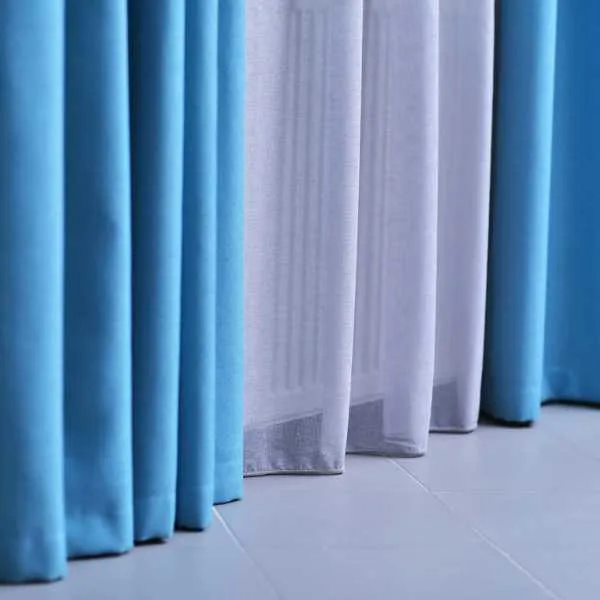
Another effective way of hanging curtains is for the hem to graze or kiss the floor. In other words, the drapes end on the floor exactly.
As you can imagine, this is very tricky to achieve. It requires meticulous measuring of the rod to floor height and skilled installation. Leave this one to the professionals.
Breaking

Designers love this third length because it’s informal, relaxed, and stylish. The hem of the drapes “break” as they hit the floor and extend a couple of inches in a “puddle”. The buckled hemline resembles the break of well-tailored men’s trousers as they hit their dress shoes.
Breaking is less fussy than a full puddle, especially if you need to regularly open and close the curtains. It still gives a Bohemian, carefree effect without the chance of tripping over or getting caught in the curtain.
This is a length I often achieve by mistake, when my measurements are off, so it’s perfect for the less skillful measurement takers. It’s also handy if you want your curtains to black out completely – shorter curtains allow light to filter through.
Puddling
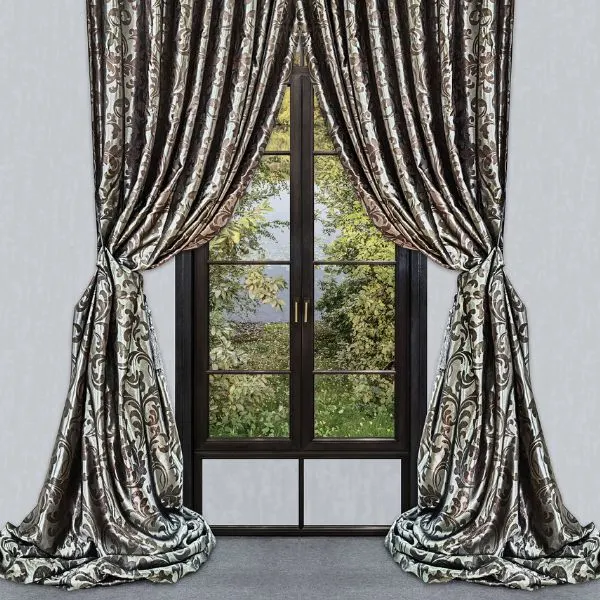
For an elegant, traditional look, hang your curtains so that they puddle a couple of inches on the floor.
This is ideal for romantic bedrooms, formal dining rooms, or French country-house aesthetics. Ensure that the drapes are soft and lustrous enough to puddle effectively and that the puddle is large enough to look intentional, rather than an error of measurement.
However, it is high maintenance as the drapes get dirty, attracting dust and pet hair more easily. The curtains must be moved and repositioned when cleaning. It’s also a risky choice if you have small pets or children who can get caught in or trip over the fabric.
How to Measure Curtain Length
To achieve your chosen curtain length, i.e., how you want the drapes to hit the sill or floor, measure from the curtain rod downwards.
However, the curtain heading will influence your measurements. For example:
- For pleated curtains made to cover the drapery pole, measure from the top of the rod to the floor.
- For curtains with rod pockets, measure from the top of the rod to the floor. Add half an inch.
- For curtains with grommets, measure from the top of the rod to the floor. Add the distance from the grommet to the curtain panel.
The next aspect of measurement depends on how high off the floor you want the curtain:
- To achieve the floating effect, subtract 3/8 or ½ inches from the rod to the floor measurement.
- For curtains to kiss the floor, measure the rod to floor length exactly.
- Add ½ to 3 inches to your curtain length measurement, depending on how much you want the curtain breaking on the floor.
- Adding 6-16 inches to the curtain length will achieve the puddling effect.
Measuring your curtain length is simple. Unless you are having bespoke curtains made: drapes come in standard lengths, such as 63, 84, 96, and 108 inches. Choose the length closest to your desired length and hem them if necessary.
Therefore, the practical starting point for hanging curtains is measuring and installing the rod at the correct height. Take careful measurements at more than one point on the floor, as floors can often be uneven.
Should Curtains Touch the Floor?
Whether or not curtains should touch the floor depends on your preference and the look you are going for. If you are aiming for a floating effect, then the curtains should not touch the floor. On the other hand, for a breaking or puddling effect, the curtains should touch the ground. Curtains touching the floor look more elegant, but they are harder to keep clean.
How Far Should Curtains Be Off the Floor? Final Thoughts
Drapes finish a room stylishly, apart from functioning as light and sound blockers and insulation. To make the most of your elegant window treatments, decide how far from the floor you want to hang the curtains, and carefully measure the rod’s placement. Rather have your curtains longer than shorter.
Did you find our answer to the question, “how far off the floor should curtains be” helpful? Leave your comment below.
